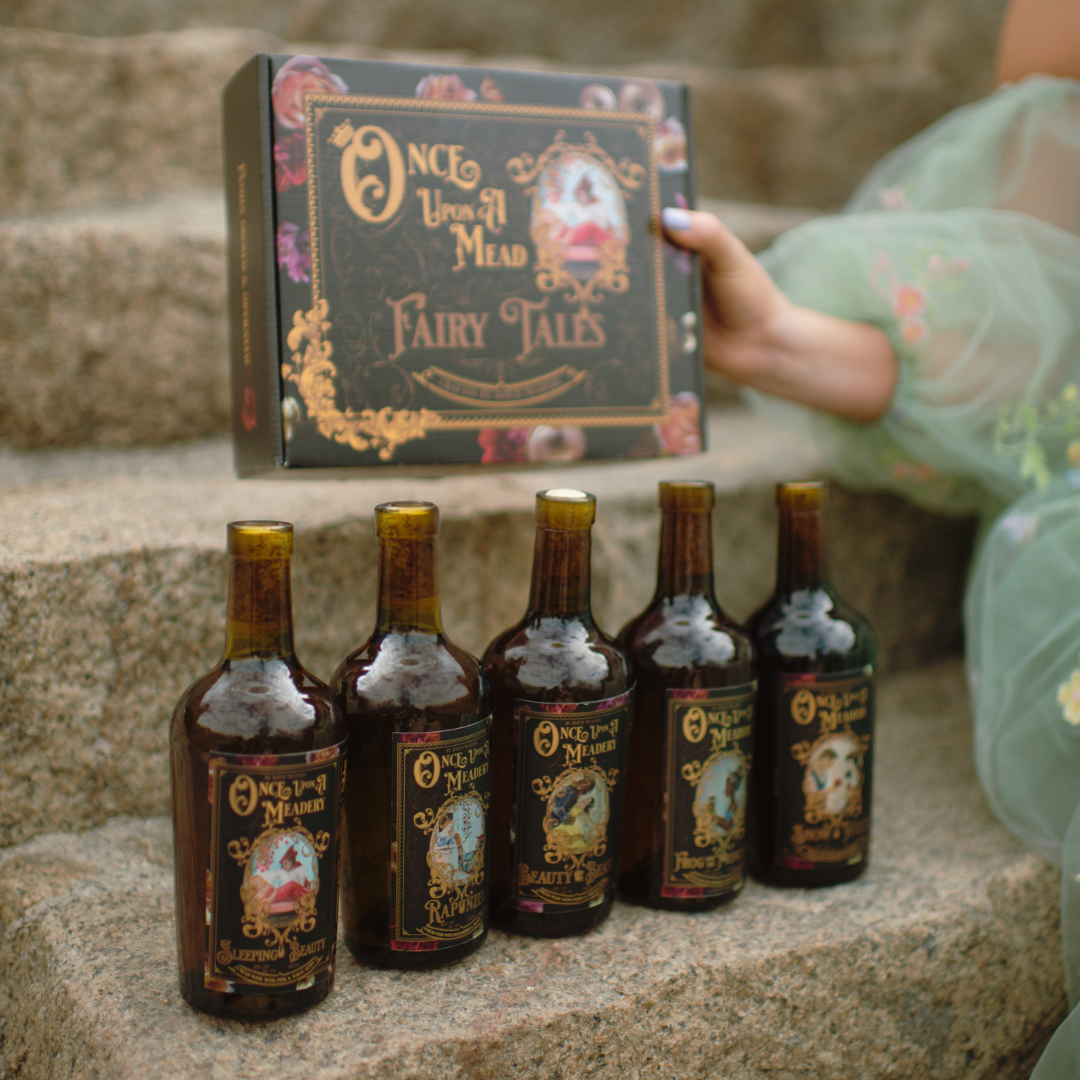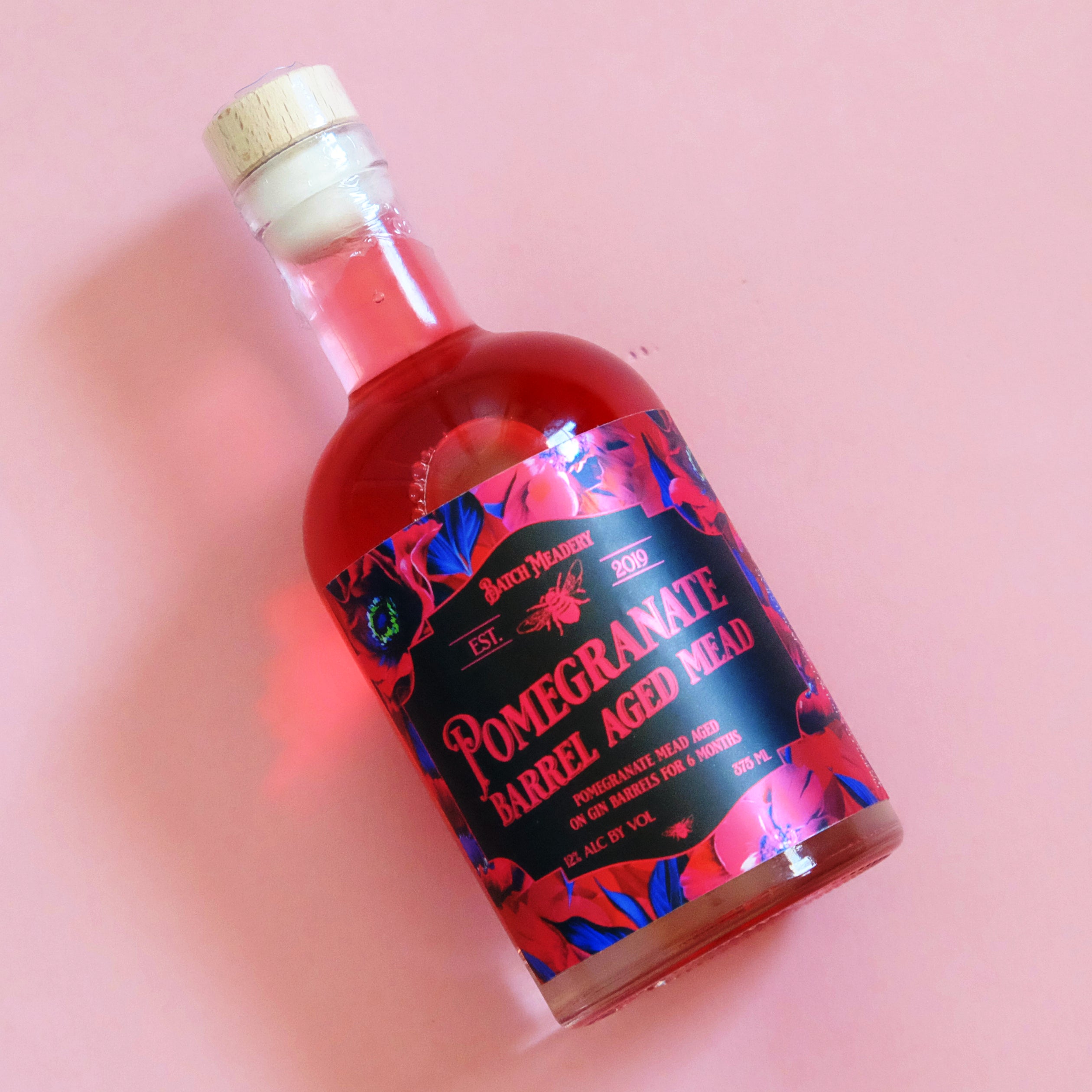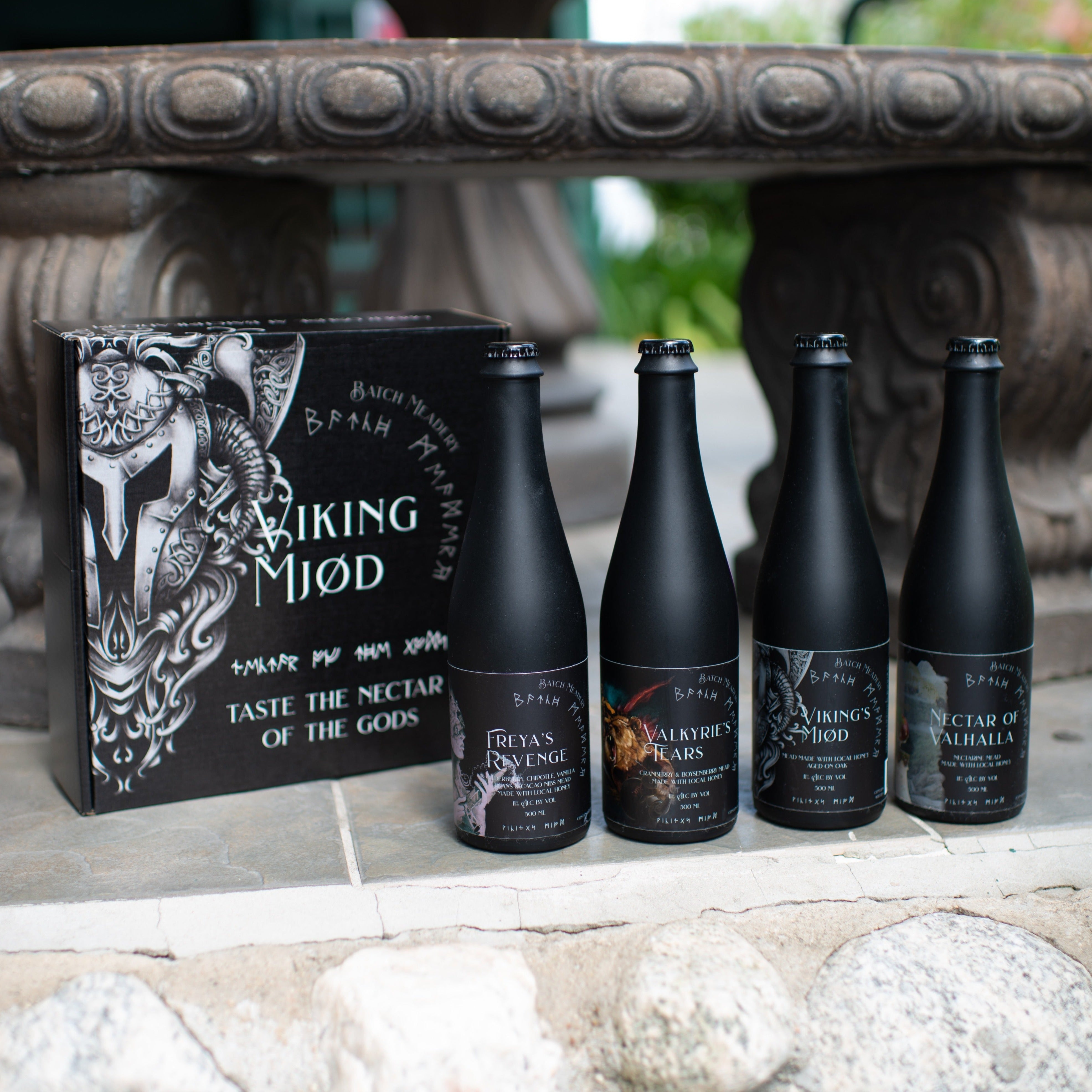In a realm where history blends with legend, the image of Vikings indulging in grandiose mead halls, their laughs echoing amidst the clinking of horns, paints a vivid picture. But what's the reality behind these iconic gatherings? Was mead truly the drink of choice for these Norse warriors, and do these legendary mead halls hold up to historical scrutiny?
From the raucous feasts of Beowulf to the misty lore of Viking mead halls- a toast to the mystic past awaits us! Settle in, as we quaff our glasses and delve into the age-old association between Vikings and Mead Halls. And while we embark on this journey, let us relish the sweet nectar of mead and muse over its delightful charm. Ready your drinking horns and allow us to regale you with tales, some confirmed by history, others best accompanied with our rich, flavorful mead.
Image: Carla Santiago / Unsplash
Vikings and Mead
The Vikings, known for their incredible seafaring adventures and rich mythological tales, held mead in high esteem. Mead, a fermented beverage made from honey, water, and sometimes various fruits, spices, grains, or hops, was more than just a drink to these Norse explorers. It symbolized prosperity, creativity, and the divine – often thought to be a gift from the gods themselves.
In the sagas and tales passed down through generations, mead flows freely, underscoring its importance in Viking society. It was believed to imbue poets and scholars with inspiration and was a favored drink in the halls of the gods.
Mead's connection to the Vikings is more than just folklore; it's a testament to their ingenuity and relationship with nature. Turns out the Vikings were pretty knowledgeable about beekeeping practices. They extracted pure honey from hives and used it to make high-quality mead; however, in an effort to not be wasteful, they’d also crush and soak the honeycombs in water.
If you were a Viking elite, you probably got to drink the good stuff. Lower down on the social totem pole and you’d find yourself sipping the crushed honeycomb mead. Honestly, it probably still tasted delightful.
Whether you were a revered Viking chieftain or a hardworking craftsman, mead was a beloved part of daily life, its rich flavors a reward for the day's endeavors.
A Viking Mead Hall?
Nestled in the woven tapestry of history, there lies a remarkable tradition that has captivated the imaginations of history buffs, craft beer enthusiasts, and folklore fans alike. This tradition is none other than the legendary Viking mead halls. These were not merely buildings; they were the heartbeat of Viking society, where the values of community, craftsmanship, and authentic connection were lived out daily.
The existence of Viking mead halls is an undisputed fact, their presence recorded not only in archeological findings but in the sagas and tales passed down through generations. These halls were far more than mere drinking spots; they were the heart of the Viking community. Typically massive in size, these Viking mead halls were predominantly constructed from timber, often featuring fireplaces to provide warmth during the brutal weather conditions. Here, under the warm glow of firelight, strategies were formed, stories were woven into the fabric of history, and bonds were forged over shared goblets of mead.
A reconstructed Viking hall in Denmark. Image: Malene Thyssen
Immersed deeply in history, mead halls originated during the 5th century and continued to play a pivotal role well into the Early Middle Ages, an era synonymous with the Vikings. Although renowned as the epicenter of Viking revelry, mead halls served various functions beyond being just a drinking den. Our friends at Wikipedia list a few non-drinking related purposes for mead halls:
- Housing for a lord and his loyal retainers.
- A social gathering hub enabling lords to keep a close eye on their subjects’ activities.
- The majestic headquarters of a monarch - a common spectacle in virtually all medieval-themed content
One remarkable discovery in southern Sweden unveiled the remnants of what could have been a grand mead hall, stretching across what today would parallel a modern football field. This vast space hints at the grandeur and social importance these halls held within Viking society.
Literature has bestowed upon us plenty of mead hall examples. There’s the mead hall from Beowulf, of course, as well a thousand and one locations from Game of Thrones. J.R.R. Tolkien’s Lord of the Rings also has a mead hall — Meduseld, the Golden Hall of Rohan.
The individuals fortunate enough to have enjoyed the luxury of a mead hall remain a topic of debate. It's very likely that the socio-political hierarchy and class system influenced those who were privileged to partake in the mead hall festivities. Although it's a potentially unsettling truth, we strive to provide answers, even if they might be subjective and best appreciated alongside a glass of mead.
The Legacy of Mead Halls in Modern Times
Brewing mead in the Viking age was a careful blend of art and science, much like craft brewing today. Local honeys would be blended with water and heated, then allowed to ferment with wild yeasts or yeast introduced from previous batches. The result was a beverage as diverse as the regions from which it came, each batch a reflection of the local environment and the skills of its brewer.
Modern craft breweries and meaderies draw inspiration from these ancient traditions, emphasizing local ingredients, innovation, and a deep respect for the brewing craft. Like the mead halls of old, today’s tasting rooms and brewpubs aim to be places where community gathers, stories are shared, and the connection to history and place is felt with every sip.
At Batch Mead, nestled in the heart of tradition and local craftsmanship, we've been stirred by the recent fascination with mead. This resurgence isn't surprising, given that mead claims the title of the oldest alcoholic beverage known to humanity. Yes, before there was beer or wine, there was the golden nectar of mead, favored by ancients for its enchanting sweetness and warming qualities.
Whether you're a history buff exploring the world of the Vikings, a craft beer enthusiast savoring the complexities of modern brews, or a folklore fan enchanted by tales of old, the spirit of the Viking mead hall lives on. It invites us to gather, to celebrate our connections to history and each other, and to revel in the craftsmanship that enriches our world.
In essence, the legacy of Viking mead halls – with their emphasis on craftsmanship, authenticity, and community – continue to inspire us. They encourage us to create spaces where we can come together to share our stories and celebrate our collective heritage. They remind us that in every glass of mead, there lies a story waiting to be told, a piece of history to cherish, and a community to join in toast.
To those who find joy in the ferment of history, the craft of brewing, and the warmth of community, cheers! Here's to remembering the past, savoring the present, and toasting to the future.

Once Upon a Mead - Fairytale Mead Set

Pomegranate Barrel Aged Mead

Viking Mead Series - 4 Bottle Set
About Us
MEAD (HONEY WINE) IS A PASSION FOR US
We started Batch Mead in 2019 to leave our Silicon Valley tech careers and pursue our real passion, MEAD!
We love locally sourced honey, apples and other ingredients. We focus on small batches to keep taps rotating and deliver delicious meads and hard ciders.
We believe mead is an experience, and our tasting room reflects all the notes of that ideal experience.
We recently won Best in Show from the San Diego International Beer Festival (2020, 2021 & 2022)! As well as several other wine, beer & mead awards!

